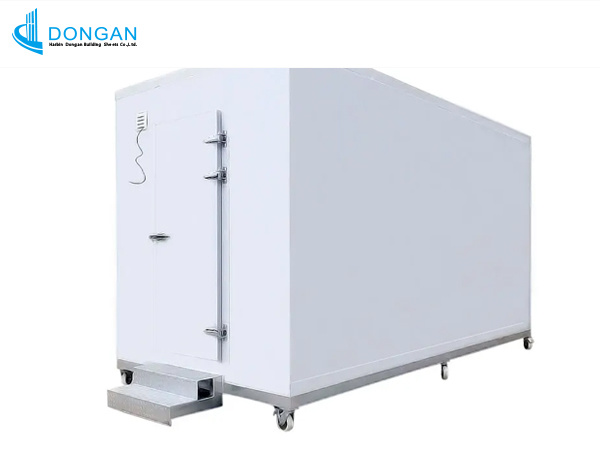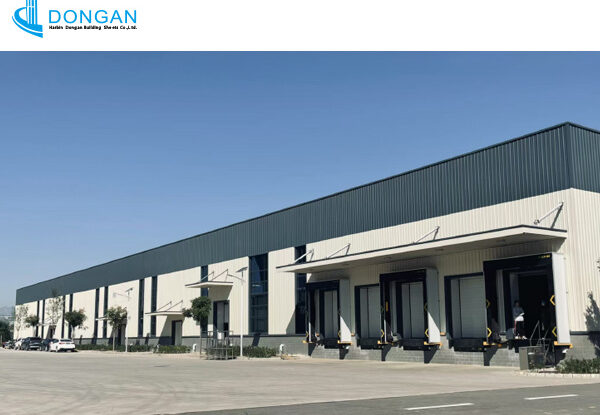Cold storage is a very important supply chain component in the temperature-sensitive perishable food supply chain that maintains commodities, medicine, and food items fresh and appropriate for consumption. Small cold storage or medium and large cold storage warehouses are utilized by companies according to their requirements. Here we are contrasting the distinction among these warehouses, the strong points of both, and where each one is better suited for diversified applications.
1. What is cold storage?
Cold storage is a refrigerated warehouse or cooled enclosure where perishable goods are preserved in a fresh state. They range from house-level small cold storage for small businesses to medium and large cold storage to be used by worldwide supply chains.
The overall application of cold storage is to extend shelf life, ensure the quality of the product, and ensure food safety. One can purchase a walk-in cold storage, an industrial freezer, or a multi-chamber refrigeration warehouse depending on the required capacity.
2. Space-saving and effective small cold storage
Small cold storage is ideal for small storage needs or small space operations. They are utilized in such applications as:
- Restaurants and cafes – frozen foods, fresh fruits and vegetables and dairy products storage.
- Supermarkets – perishable food like vegetables, seafood and meat storage.
- Pharmacies – temperature-controlled medicines and vaccine storage.
- Small fisheries and farms – transient holding of goods before distribution.
Advantages of small cold storage:
- Lower initial cost – lower installation and maintenance cost.
- Energy saving – lower size and capacity in refrigeration is needed.
- Flexibility – can be installed anywhere, even in urban areas.
- Maintenance ease – less mechanical parts, less maintenance expense.
Small cold storage has limited capacity, and hence is not suitable for companies with high storage quantities.

3. Medium and Large Cold Storage: Large Capacity Solutions
Medium and large cold storage is best suited for industrial applications, including:
- Food distributors – for storing enormous quantities of chilled or frozen products.
- Manufacturers – for storing raw materials and finished products.
- Logistics companies – for utilization as nodes of cold chains.
- Exporters/Importers – to store huge quantities of perishable items.
Advantages of medium and large cold storage:
- Expanded storage space – can accommodate thousands of pallets.
- Expanded technological capacity – computer-based inventory control system.
- Expanded temperature zoning – potential for product compartments.
- Economies of scale – unit cost advantage of the bulk storage facility.
Conversely, however, the medium and large cold storage houses are very capital-intensive, more energy- and space-intensive and less appropriate for small-scale businesses.

4. Key Differences: Small vs. Medium and Large Cold Storage
| Feature | Small Cold Storage | Medium and Large Cold Storage |
| Capacity | Limited (a few pallets) | High (hundreds to thousands of pallets) |
| Cost | Lower initial investment | Higher capital and operational expenditure |
| Energy Use | More energy-efficient | Higher power consumption |
| Installation | Easy, modular installations | Requires specialized construction |
| Scalability | Limited expansion options | Can be expanded with extra chambers |
| Automation | Mostly manual | Often includes automated retrieval systems |
Which One to Select?
A small cold storage unit for small businesses is cheap and just sufficient for their everyday requirements.
For large operations, medium and large cold storage investments guarantee better efficiency and cost savings in the long term.
5. Conclusion
The right cold storage choice depends on your business size, budget, and required space. Small cold storage would be appropriate for small local businesses that need tiny but effective cooling. Medium and large cold storage, on the other hand, would be appropriate for large businesses that need gigantic volumes of temperature-controlled space.
Based on these differences, businesses can determine how to implement cold chain logistics, reduce wastage, and optimize profitability. No matter the size of a small cold storage or bulk refrigerated plant you intend to rent or lease, a well-informed decision will ensure your products arrive fresh and safe and consistent for your customers.






